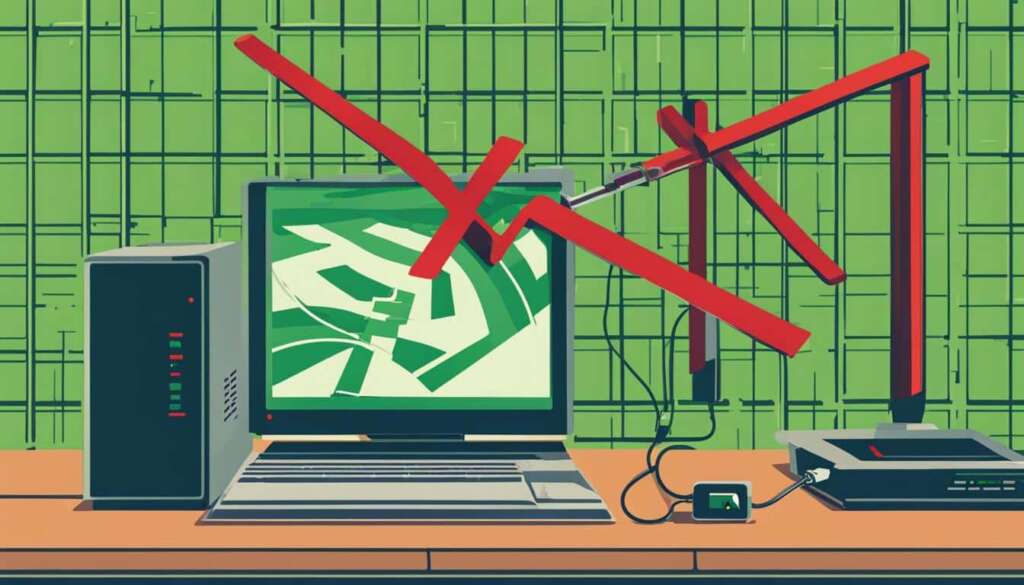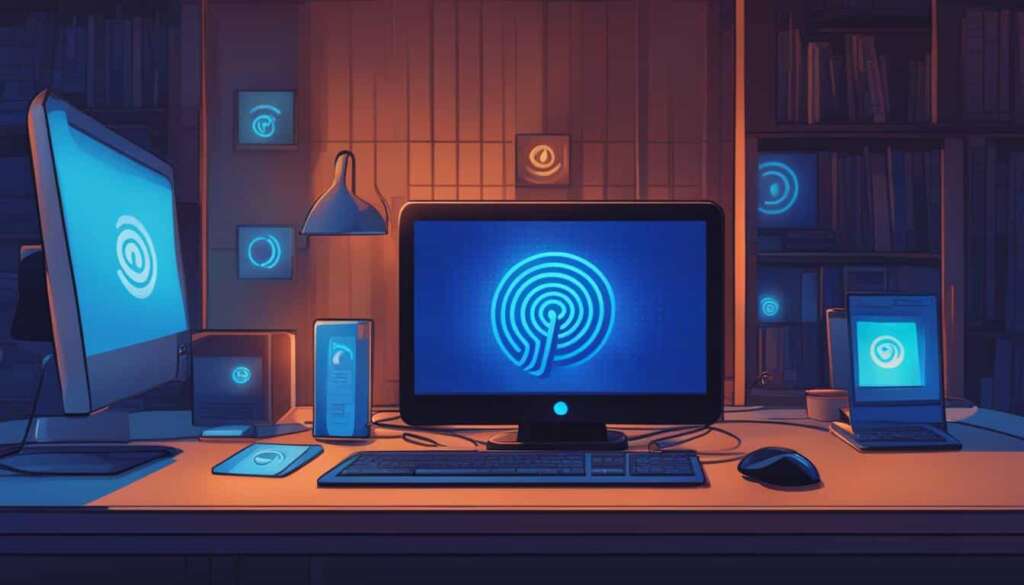Table of Contents
If you’re experiencing trouble with your PC’s WiFi connection, you’re not alone. Many users encounter issues when trying to connect their PC to WiFi networks. However, there are several troubleshooting steps you can take to resolve these problems and get back online.
When troubleshooting PC WiFi connections, it’s important to start by running diagnostics to identify any potential issues. This can help pinpoint the root cause of the problem. Next, check your WiFi settings to ensure they are correctly configured.
Managing your WiFi connections is another crucial step. Make sure you’re connecting to the correct network and entering the correct password. Sometimes, PCs may try to connect to other available networks, causing connection problems.
If you’re still unable to connect, try switching between different WiFi frequency bands. Some devices may have compatibility issues with certain bands, so trying a different one can help resolve the problem.
Additionally, check if the physical WiFi switch on your PC is turned on. Sometimes, it can accidentally get switched off, resulting in no WiFi connectivity.
Lastly, consider restarting both your modem and router. This simple step can often solve common connection problems by refreshing the network settings.
By following these troubleshooting steps, you can resolve PC WiFi connection issues and enjoy a seamless online experience. Don’t let connectivity problems hold you back; get your PC back online today!
Tips for Fixing Slow or No WiFi in Certain Rooms
If you’re experiencing slow or no WiFi signal in specific rooms of your house, it can be frustrating. However, there are several steps you can take to improve your internet access in those areas.
1. Reposition Your Router
One of the first things to try is moving your router to a more centralized location in your home. This can help to improve the WiFi signal reception and reach to different rooms. By placing the router in an open area, away from obstructions like walls or furniture, you can optimize its performance and enhance the overall coverage.
2. Adjust the Router’s Antennas
Another option is to adjust the external antennas on your router. By positioning them in different directions, you can maximize the coverage area and potentially eliminate dead spots where the WiFi signal is weak or nonexistent.
3. Check for WiFi Congestion
If you live in an apartment building or an area with multiple WiFi networks nearby, the WiFi channels might be congested. To identify and switch to a less crowded channel, you can utilize software tools like NetSpot or Wi-Fi Analyzer. These tools provide a visual representation of the available channels and the level of congestion for each, helping you choose the most optimal channel for your router.
4. Consider a Wireless Repeater or Mesh System
If all else fails, you might want to consider investing in a wireless repeater or a whole-home mesh wireless system. These devices can extend the range of your WiFi network and eliminate dead spots, ensuring a strong and stable connection throughout your entire house.
5. In Conclusion
By implementing these tips, you can troubleshoot and improve slow or no WiFi situations in specific areas of your home. Moving your router, adjusting its antennas, checking for WiFi congestion, and considering additional devices like repeaters or mesh systems can significantly enhance your internet access in those problematic rooms.
Troubleshooting Connection Issues for One Device
If you’re facing issues with connecting a single device to your WiFi network, don’t worry. There are simple troubleshooting steps you can take to resolve the problem.
- Turn off and on WiFi: Start by turning off the WiFi on the device that can’t connect. Wait for a few seconds and then turn it back on. This simple step can help refresh the network connection.
- Check WiFi dongle: If your device uses a WiFi dongle, unplug it and then plug it back in. This can resolve any temporary connectivity issues caused by a loose connection.
- Restart device and router: If the above steps don’t work, try restarting both your device and the router. Sometimes, a momentary network issue can prevent a device from connecting to WiFi, and a fresh start can resolve it.
- Use WiFi troubleshooting features: If you’re using Windows 10 or 11, you can utilize the built-in “WiFi troubleshooting” feature to diagnose and repair network issues. The feature can automatically detect and fix common connectivity problems.
- Wireless Diagnostics for Mac OS: For Mac users, running Wireless Diagnostics can help identify and troubleshoot connectivity problems. The tool offers a comprehensive analysis of your WiFi network and suggests solutions.
If you’ve followed these troubleshooting steps and are still experiencing difficulties connecting the one device to your WiFi, it may be worth seeking additional support from your device manufacturer or internet service provider.
| Device Connection Troubleshooting Steps | Effectiveness |
|---|---|
| Turn off and on WiFi | ✓ |
| Check WiFi dongle | ✓ |
| Restart device and router | ✓ |
| Use WiFi troubleshooting features | ✓ |
| Wireless Diagnostics for Mac OS | ✓ |
Troubleshooting WiFi Issues for Multiple Devices
If you’re experiencing the frustrating issue of nothing connecting to your WiFi network or facing sudden drops in connection at random times, there are some troubleshooting steps you can take.
Start by plugging a laptop directly into your router using an Ethernet cable to test the internet connection. If you still can’t connect through Ethernet, it’s possible that there is an internet outage. To verify, check your internet service provider’s webpage or contact them directly.
If the internet connection is working through Ethernet, try resetting your router. This simple step often resolves various WiFi issues, including drops in connection and the disappearance of the WiFi network. Additionally, check for any interference from other devices or networks, as this can disrupt your WiFi signal. Another solution to consider is changing the WiFi channel on your router to avoid conflicts.
If you’ve exhausted all troubleshooting options and the problem persists, it may be time to consider investing in a new router. Upgrading to a more reliable and modern router can significantly improve your WiFi experience and ensure a stable connection for all your devices.
FAQ
How can I troubleshoot PC WiFi connection issues?
If you’re having trouble connecting your PC to WiFi, you can try running diagnostics, checking WiFi settings, managing WiFi connections, trying different frequency bands, ensuring the physical WiFi switch is turned on, and restarting the modem and router.
What can I do to fix slow or no WiFi in certain rooms?
To improve WiFi signal reception in certain rooms, you can try moving your router to a more centralized location in your home, adjusting the external antennas on your router to reach multiple directions, using software like NetSpot or Wi-Fi Analyzer to identify and switch to a less congested channel if you live in an apartment building, or considering a wireless repeater or whole-home mesh wireless system to extend the range of your WiFi network and eliminate dead spots.
How can I troubleshoot connection issues for one device?
If you’re having trouble connecting one device to WiFi, you can try turning off and re-enabling the WiFi on the device, unplugging and replugging the WiFi dongle, restarting the device and the router, using the “WiFi troubleshooting” feature on Windows 10 or 11 to diagnose and repair network issues, or running Wireless Diagnostics on Mac OS to resolve connectivity problems.
What should I do if none of my devices can connect to WiFi?
If none of your devices can connect to WiFi, you can start by plugging a laptop directly into the router with an Ethernet cable to test the internet connection. If you can’t connect through Ethernet, there may be an internet outage, so it’s a good idea to check the ISP’s webpage or contact them to verify. Resetting the router can often resolve various issues, including connection drops and network disappearance. You should also check for interference from other devices or networks and consider changing the WiFi channel. If the problem persists, it may be time to invest in a new router.













